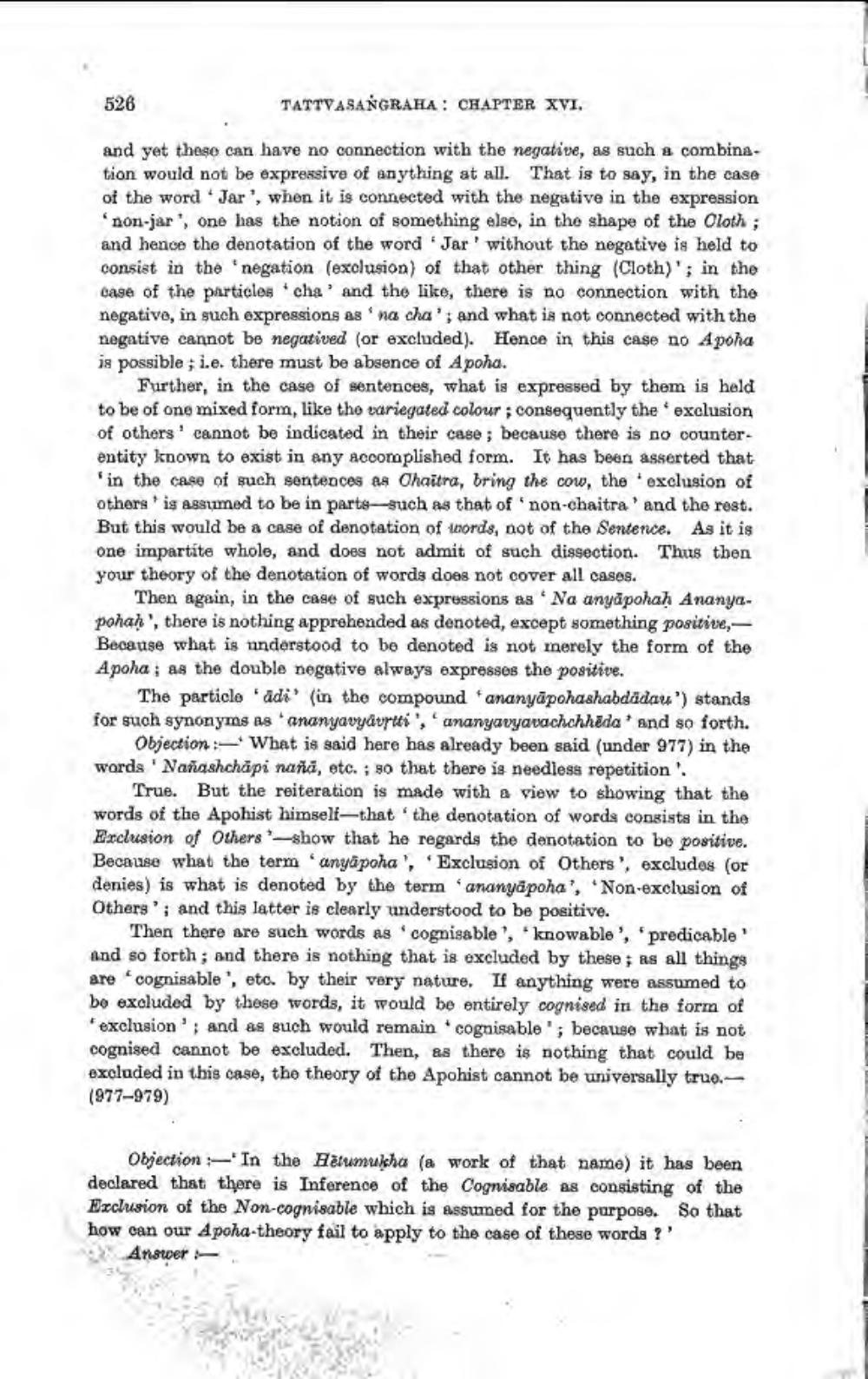________________
526
TATTVASANGRAHA: CHAPTER XVI.
and yet these can have no connection with the negative, as such a combination would not be expressive of anything at all. That is to say, in the case of the word 'Jar', when it is connected with the negative in the expression 'non-jar, one has the notion of something else, in the shape of the Cloth; and hence the denotation of the word Jar' without the negative is held to consist in the 'negation (exclusion) of that other thing (Cloth)'; in the case of the particles cha' and the like, there is no connection with the negative, in such expressions as 'na cha'; and what is not connected with the negative cannot be negatived (or excluded). Hence in this case no Apoha is possible; i.e. there must be absence of Apoha.
Further, in the case of sentences, what is expressed by them is held to be of one mixed form, like the variegated colour; consequently the exclusion of others' cannot be indicated in their case; because there is no counterentity known to exist in any accomplished form. It has been asserted that in the case of such sentences as Chaitra, bring the cow, the exclusion of others' is assumed to be in parts-such as that of non-chaitra' and the rest. But this would be a case of denotation of words, not of the Sentence. As it is one impartite whole, and does not admit of such dissection. Thus then your theory of the denotation of words does not cover all cases.
Then again, in the case of such expressions as Na anyapohaḥ Ananyapohaḥ, there is nothing apprehended as denoted, except something positive,Because what is understood to be denoted is not merely the form of the Apoha; as the double negative always expresses the positive.
The particle adi (in the compound ananyapohashabdädau") stands for such synonyms as 'ananyavyävrtti, ananyavyavachchheda and so forth. Objection: What is said here has already been said (under 977) in the words' Nañashchapi naña, etc.; so that there is needless repetition'.
True. But the reiteration is made with a view to showing that the words of the Apohist himself-that the denotation of words consists in the Exclusion of Others-show that he regards the denotation to be positive. Because what the term 'anyapoha', 'Exclusion of Others', excludes (or denies) is what is denoted by the term 'ananyapoha', 'Non-exclusion of Others'; and this latter is clearly understood to be positive.
Then there are such words as 'cognisable', 'knowable', 'predicable' and so forth; and there is nothing that is excluded by these; as all things are 'cognisable, etc. by their very nature. If anything were assumed to be excluded by these words, it would be entirely cognised in the form of "exclusion'; and as such would remain cognisable'; because what is not cognised cannot be excluded. Then, as there is nothing that could be excluded in this case, the theory of the Apohist cannot be universally true.(977-979)
Objection-In the Hatumukha (a work of that name) it has been declared that there is Inference of the Cognisable as consisting of the Exclusion of the Non-cognisable which is assumed for the purpose. So that how can our Apoha-theory fail to apply to the case of these words?'
Answer:




